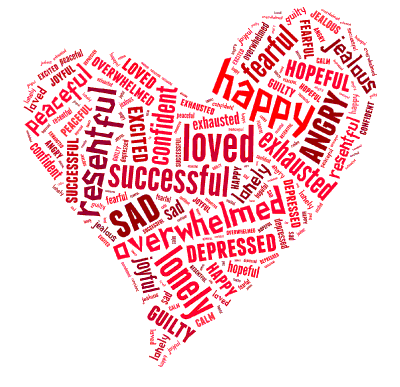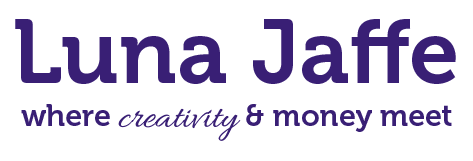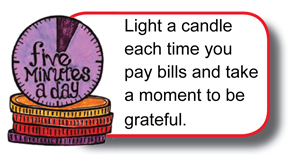 Spending is often triggered by our emotional state; depression might lead you to buy clothes that are cheap or don’t fit right and exhaustion might result in extra large triple espressos or expensive dinners with booze and desserts you don’t need.
Spending is often triggered by our emotional state; depression might lead you to buy clothes that are cheap or don’t fit right and exhaustion might result in extra large triple espressos or expensive dinners with booze and desserts you don’t need.
On the other hand, you might only buy yourself cut flowers when you’re feeling hopeful about the future. Maybe you spend money on friends, your kids or your loved ones, when in fact it’s you that needs to be loved up.
I have a Mind Mapping exercise that will spread open the picture on how your feelings impact your spending. You remember Mind Maps right? If not, I have a template already made that you can fill-in.
Instructions for Mind Map Exercise
Here’s what to do after you print out the Mind Map:
![]() In each of the 7 surrounding circles: Write a feeling/emotion that you experience regularly. Make sure to include the spectrum of positive to negative feelings.
In each of the 7 surrounding circles: Write a feeling/emotion that you experience regularly. Make sure to include the spectrum of positive to negative feelings.
![]()
Think of what you tend to spend money on when you are feeling each emotion. Get specific and write the item on the line coming off that circle. Think of as many items as you can and add more lines.
![]() In your Wild Money Journal, respond to the following questions:
In your Wild Money Journal, respond to the following questions:
a. When I feel good about my life and myself, I spend on. . .
b. When I feel bad or anxious, I buy. . .
c. When I look at this mind-map, I feel. . .
![]() In the large center circle, name your mind map and write the date. It could be “How my feelings affect where my money goes. . .” or the biggest insight you gained.
In the large center circle, name your mind map and write the date. It could be “How my feelings affect where my money goes. . .” or the biggest insight you gained.
Example Mind Maps
from Wild Money: A Creative Journey to Financial Wisdom
DINA’S STORY
![]() Dina was tired of living with debt and feeling like a failure. She thought she was careful with money, and yet ended up with a $1,000 credit card bill each month. The embarrassing part was that she managed the finances for her company and could handle million dollar budgets yet couldn’t bring the household spending under control. She was vaguely aware of cycles in her spending habits but couldn’t put her finger on the trigger points.
Dina was tired of living with debt and feeling like a failure. She thought she was careful with money, and yet ended up with a $1,000 credit card bill each month. The embarrassing part was that she managed the finances for her company and could handle million dollar budgets yet couldn’t bring the household spending under control. She was vaguely aware of cycles in her spending habits but couldn’t put her finger on the trigger points.
By creating a mind map she was able to explore how her feelings impacted her spending. She discovered that when overwhelmed, she spent money on coffee and sugary sweets. Guilt led her to the mall to buy things for the kids to make up for time she wasn’t spending with them. Fear caused her to rein in the spending and suddenly start saving, but with a knot in her stomach and an edge in her voice. What she realized by doing this exercise was that she was the one in the family with a spending problem.
Did you have an “a-ha” moment after reflecting on your Mind Map? What’s one small thing that surprised you?


